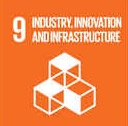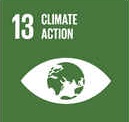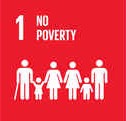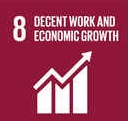|
SDG 14 - UN
Please use our A-Z INDEX to navigate this site, or our HOMEPAGE
|
|
FOR OUR CHILDREN - The UN sustainability development goals are designed to build a better world for next generations to come. Mankind has come a long way in a very short time. We are only just becoming self-aware in relation to the harm we are causing and the lack of safety nets for our future. The SDGs are international aims that are designed to repair planet earth to make it fit for purpose in supporting all life in a way that ensures the continued survival of species. These goals address the global challenges we face, including those related to poverty, inequality, climate, environmental degradation, prosperity, peace and injustice. The Goals interconnect and in order to leave no one behind, it is important that we do our utmost to achieve each Goal and target by 2030.
UN SUSTAINABILITY DEVELOPMENT GOAL 14: LIFE BELOW WATER
The world’s oceans – their temperature, chemistry, currents and life – drive global systems that make the
Earth habitable for humankind. Our rainwater, drinking
water, weather, climate, coastlines, much of our
food, and even the
oxygen in the air we breathe, are all ultimately provided and regulated by the sea. Throughout history, oceans and seas have been vital conduits for trade and
transportation.
PROBLEM AREAS
Unfortunately, acid oceans are caused by greenhouse gases from our houses, vehicles, farming and factories as we burn fossil fuels, rather than use renewables.
Plastics are an essential component of modern living, a petrochemical distillate of crude oil. While plastics are essential to modern living an effective waste management system is not in place to recycle spent items, much of which finds its way into our ocean via rivers.
Elected representatives and civil servant policy makers have been unable to curb their kleptocratic mindsets to bring international politics out of the dark ages into the the anthropocene age.
CONSERVATION - PROTECTED AREAS 5 JUNE 2017 PRESS RELEASE
With recent commitments made by governments around the globe, the world is on track to protect over 10% of the globe’s marine areas by 2020, announced Dr.
Cristiana Pașca
Palmer, the Executive Secretary of the Convention on Biological Diversity.
Focussing only on areas under national jurisdiction, 14.4% are currently protected; this is projected to rise to over 23% by 2020.
“As we mark World Environment Day, these
concrete steps towards protecting more of the world's marine areas is another cause for celebration. Our planet's biodiversity is critical for humanity, and all countries must redouble their efforts to reach our common objectives," said Erik Solheim, Head of
UN
Environment.
Anchovies | Bass | Bream | Catfish | Clams | Cod Coley | Crabs | Crayfish | Eels | Grouper | Haddock | Hake | Halibut | Herring | Jellyfish Krill | Lobster | Mackerel | Marlin | Monkfish | Mullet | Mussels | Oysters | Perch | Plaice | Pollock | Prawns | Rays | Sablefish | Salmon Sardines | Scallops | Sharks | Shrimp | Skate | Sole | Sprat | Squid | Sturgeon | Swordfish | Trout | Tuna | Turbot | Whiting
LINKS & REFERENCE
https://www.un.org/sustainabledevelopment/sustainable-development-goals/ https://www.un.org/sustainabledevelopment/globalpartnerships/ https://www.un.org/sustainabledevelopment/peace-justice/ https://www.un.org/sustainabledevelopment/biodiversity/ https://www.un.org/sustainabledevelopment/oceans/ https://www.un.org/sustainabledevelopment/climate-change-2/ https://www.un.org/sustainabledevelopment/sustainable-consumption-production/ https://www.un.org/sustainabledevelopment/cities/ https://www.un.org/sustainabledevelopment/inequality/ https://www.un.org/sustainabledevelopment/infrastructure-industrialization/ https://www.un.org/sustainabledevelopment/economic-growth/ https://www.un.org/sustainabledevelopment/water-and-sanitation/ https://www.un.org/sustainabledevelopment/energy/ https://www.un.org/sustainabledevelopment/gender-equality/ https://www.un.org/sustainabledevelopment/education/ https://www.un.org/sustainabledevelopment/health/ https://www.un.org/sustainabledevelopment/hunger/ https://www.un.org/sustainabledevelopment/poverty/
The 17 SDG headings that the UN hopes will make planet earth a better place to live on. They are a good starting point, but useless on their own, without direction as to how to make it happen. The way to make impact-full change is for every nation to pull together, Each country must play their part. If they are a great farming nation, they must farm sustainably. If they have forests in abundance, they must plant more trees. Houses should be carbon neutral, vehicles too, energy should be renewable, industrial units fit solar and windgens (if possible) and politicians be honest about their intentions.
|
|
|
Please use our A-Z INDEX to navigate this site, or our HOMEPAGE
This website is Copyright © 2021 Climate Change Trust & Injustice Alliance
|




































